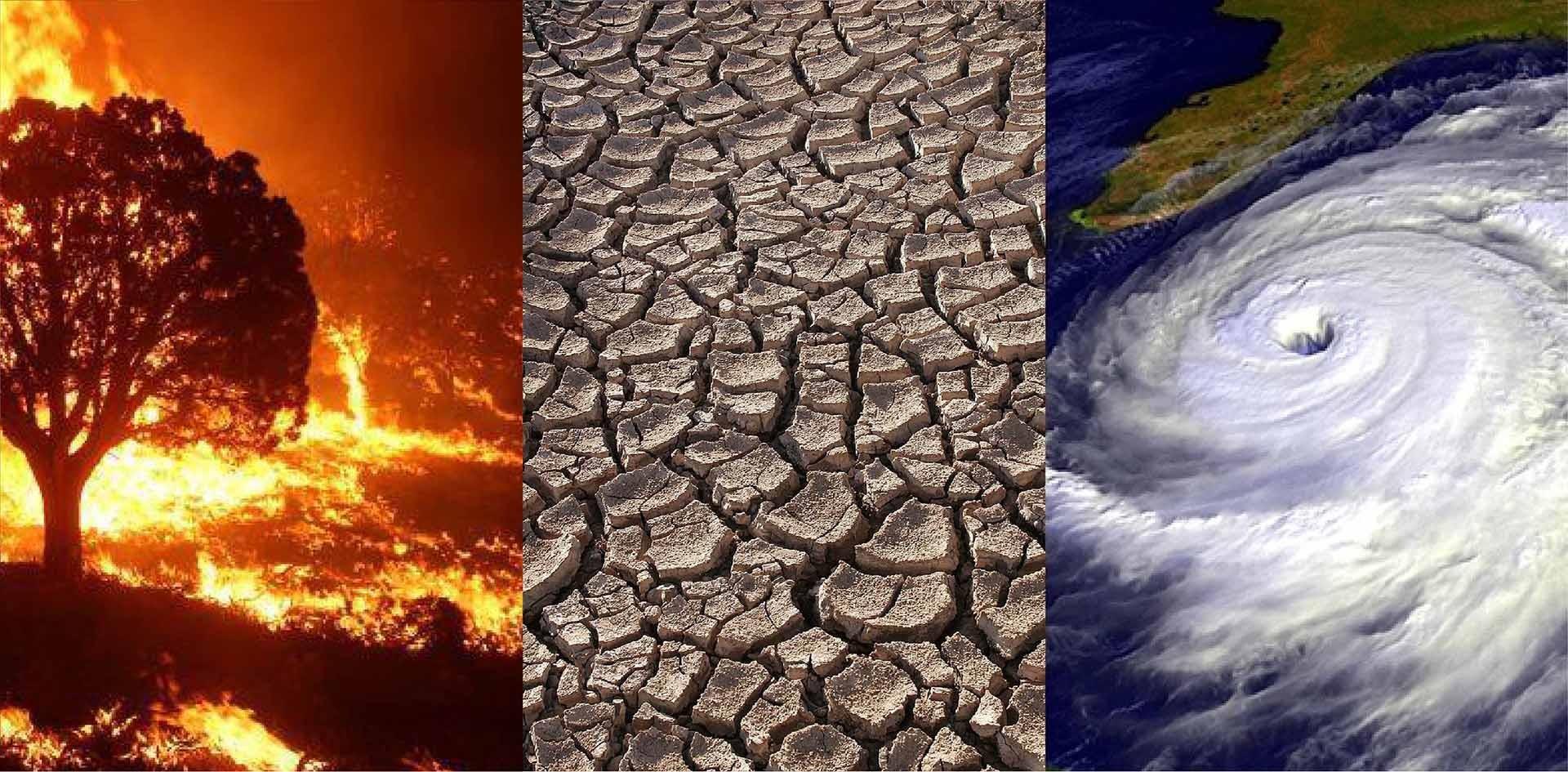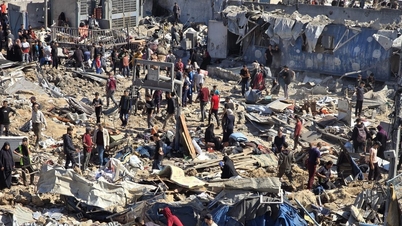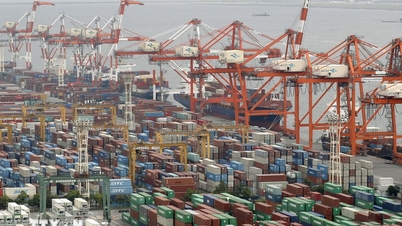The unpredictable impacts of climate change have long been warned and countries around the world have made global efforts to prevent it. However, what humans have committed and done is not strong enough to slow down this process.
 |
| Climate change has caused unpredictable consequences. Illustration photo. (Source: triptych) |
Faced with the dangers of climate change, the United Nations (UN) with its two main specialized agencies, the World Meteorological Organization (WMO) and the United Nations Environment Programme (UNEP), has gathered many scientists and experts around the world to discuss and agree on the need for an international convention on climate, creating a legal basis to respond to the negative developments that are coming.
Long journey
On May 9, 1992, the United Nations Framework Convention on Climate Change (UNFCCC), with the goal of stabilizing greenhouse gas emissions into the atmosphere and preventing excessive human interference with the environment, was approved at the UN headquarters in New York, USA, after a long drafting process.
The UNFCCC began negotiations at the United Nations Conference on Environment and Development (UNCED), also known as the Earth Summit, in Rio de Janeiro, Brazil from June 3-14, 1992. However, the UNFCCC initially did not impose binding limits on greenhouse gas emissions on individual countries and did not provide specific enforcement or binding mechanisms. Instead, the Convention provided a framework for negotiating treaties or protocols that set limits and bindings on greenhouse gas emissions. The UNFCCC was opened for signature on May 9, 1992, and entered into force on March 21, 1994. To date, the UNFCCC has 198 parties, of which Vietnam joined on June 11, 1992.
Since 1995, the parties to the Convention have met annually at the Conference of the Parties (COP) to assess progress in addressing climate change under the UNFCCC agreement. The first COP was held in Berlin, Germany. In 1997, the Convention took an important step forward when the Kyoto Protocol was signed at COP3 in Japan. The Kyoto Protocol requires participating countries to commit to achieving greenhouse gas emission targets specifically determined for each country. Officially coming into effect in February 2005, by February 2009, 184 countries had joined the Kyoto Protocol. Vietnam signed the Protocol on December 3, 1998 and ratified it on September 25, 2002.
The Kyoto Protocol is considered one of the premises that formed the concept of "climate diplomacy " when the complex developments of climate and its consequences have a significant impact on international relations. Industrialized countries and developed countries are considered the main "culprits" causing climate change, but the countries that suffer the most severe consequences are developing countries. Although developed countries have committed to taking the lead in reducing greenhouse gas emissions according to the Protocol, in reality they have found many ways to avoid, delay ratification, implementation... The United States is a country that accounts for 25% of greenhouse gas emissions but has not ratified the Kyoto Protocol because it believes it will cause damage to the economy.
Since 2009, the parties to the UNFCCC have begun to consider a more specific legally binding environmental agreement to replace the Kyoto Protocol, which expired in 2012 (later extended to 2020). At COP16 in Cancun (Mexico) in 2010, the parties adopted a joint statement stating that future global warming should be limited to below 2°C compared to pre-industrial levels. However, after many debates and tense negotiations due to conflicts of interest, the parties have not been able to come up with a new, more progressive text to replace the Kyoto Protocol.
On December 12, 2015, after many rounds of negotiations, the Paris Agreement on Climate Change was adopted at COP21 in Paris (France) and took effect from November 4, 2016, creating a breakthrough in efforts to curb global warming. The agreement maintains the goal of limiting global warming to below 2°C and strives for a more ambitious goal of 1.5°C compared to the pre-industrial revolution period. The agreement stipulates that developed countries will mobilize a minimum of 100 billion USD per year (from the time the agreement takes effect) until 2020 to help developing countries. However, this goal has not been achieved.
Many ups and downs
Since COP21, the world has gone through a long journey with many ups and downs in realizing the goals of the Paris Agreement. At COP22 in Morocco in 2016, the participating parties approved a preliminary plan to implement the Paris Agreement. At COP23 in Bonn, Germany in December 2017, the parties agreed to maintain the ambitious commitment made in France, despite the US announcing its withdrawal from the Paris Agreement from November 2019.
At COP24 in Poland in 2018, the parties overcame many disagreements to agree on the Agenda for the implementation of the Paris Agreement. However, 2019 witnessed a setback in the fight against climate change when the US officially withdrew from the Paris Agreement. At COP25 in Madrid, Spain, the parties were divided on the responsibility to reduce greenhouse gas emissions…
Hopes are pinned on COP26 in Glasgow, UK, in November 2021 (postponed by a year due to Covid-19). All 197 parties to the UNFCCC reaffirmed their commitment to limiting global temperature rise to 1.5°C. This target requires cutting CO2 emissions by 45% from 2010 levels by 2030 and reaching zero by mid-century, as well as deep cuts in other greenhouse gas emissions.
The Glasgow Agreement urges developed countries to soon complete the 100 billion USD target set at the Paris Conference 2015 as well as commit to doubling climate change adaptation funding for developing countries compared to 2019 levels by 2025, emphasizing the importance of transparency in implementing commitments. At COP26, more than 100 countries pledged to end deforestation by 2030. Nearly 100 countries pledged to cut methane emissions by 30% by 2030, 40 countries, including Vietnam, pledged to abandon coal power...
Notably, at COP26, the US and China issued a joint statement on climate change, pledging to cooperate to achieve the goal of achieving net zero emissions, addressing methane emissions, transitioning to clean energy and reducing carbon emissions. The agreement between the world's two largest emitters is seen as an important step towards achieving the goal of limiting global temperature rise to 1.5°C.
COP26 saw a commitment from 450 financial institutions, managing a total of $130 trillion in assets, equivalent to 40% of global private assets, to use investment capital to support clean technologies such as renewable energy and eliminate funding for industries using fossil fuels…
From commitment to practice
It can be said that the Paris Agreement reached at COP21 and the new commitments at COP26 show the world's great efforts in the fight against global climate change. However, how to implement it is a long story. From the goals and commitments on paper to the current situation, there are many challenges. According to scientists' warnings, climate change is seriously threatening life on Earth, when natural disasters and catastrophes caused by climate change have increased fivefold compared to 50 years ago.
Many climate records in 2023 are significantly different from those previously recorded, especially the ocean temperatures, which absorb almost all the excess heat from human-caused air pollution. Before 2023, the number of days with global average temperatures greater than 1.5°C above pre-industrial levels was very rare. However, from the beginning of 2023 to mid-September, there were 38 days with temperatures exceeding pre-industrial levels. The European Union's (EU) climate monitoring service, Copernicus, said that the three months of July, August and September of 2023 were the hottest on record and possibly the hottest in the past 120,000 years.
The study found that if the Earth's surface temperature increases by 2°C above pre-industrial levels, about 750 million people could be exposed to potentially fatal hot and humid weather conditions for one week each year. If the temperature increases by 3°C, the number of people exposed to the risk would increase to more than 1.5 billion. In addition, extreme weather events caused by climate change have caused an average annual loss of $143 billion to the global economy, including human losses ($90 billion) and economic losses ($53 billion).
In such a context, Mr. Johan Rockstrom - Director of the Potsdam Institute for Climate Impact Research, said that the upcoming COP28 in the UAE is the last opportunity to make “credible commitments to start cutting CO2 emissions from the use of fossil fuels”. Mr. Rockstrom called on major economies, including the US, India, China and the EU, to step up to address the climate crisis because the goal of limiting global warming to 1.5°C is “non-negotiable”.
French Foreign Minister Laurent Fabius warned at COP21 that we only have one Earth to live on. We cannot have a “Plan B” in climate change because humans do not have a “Planet B”.
Source





































![[Photo] Worshiping the Tuyet Son statue - a nearly 400-year-old treasure at Keo Pagoda](/_next/image?url=https%3A%2F%2Fvphoto.vietnam.vn%2Fthumb%2F1200x675%2Fvietnam%2Fresource%2FIMAGE%2F2025%2F12%2F02%2F1764679323086_ndo_br_tempimageomw0hi-4884-jpg.webp&w=3840&q=75)
![[Photo] Parade to celebrate the 50th anniversary of Laos' National Day](/_next/image?url=https%3A%2F%2Fvphoto.vietnam.vn%2Fthumb%2F1200x675%2Fvietnam%2Fresource%2FIMAGE%2F2025%2F12%2F02%2F1764691918289_ndo_br_0-jpg.webp&w=3840&q=75)








































































Comment (0)